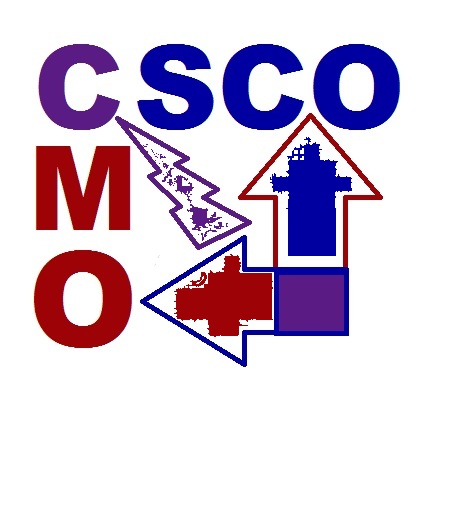Another season of NFL football is upon us and I for one could not be happier. Living in the northeast, Philly to be exact, I always love feeling that cool, crisp fall air on a Sunday afternoon as my beloved Eagles gear up for battle. Makes me want to suit up myself.
Well, not really but I do wear a jersey on game day. Hey, I know I’m 46 years-old but I can’t help it. I just love football.
But I also love marketing and advertising and as such I decided I want to go behind-the-scenes and pull back the astroturf to see what goes on in the marketing department of a professional football team. So I reached out to Tim McDermott, the Chief Marketing Officer of the Philadelphia Eagles. I wanted to pick his brain to see what it means to market and promote a professional football team in a city where a) the fans are very knowledgeable and yes, fanatical and b) there are three other major sports franchises all competing for the same piece of the sports consumer pie.
As you will see the marketing of an NFL team has its own unique set of challenges but you will also notice that a lot of the same logic Tim and his team use is applicable to any business or organization wanting to build a strong brand.
SO: What are the biggest challenges (overall) in the marketing of an NFL team?
TM: One of the biggest challenges we face is that we don’t have nearly as much control over our product as we would like. In other words, we can’t control wins and losses. A restaurant chain can control the atmosphere, the ingredients in their food, the taste of their food, the lighting, and so on. A customer has a set of expectations, including consistency that the restaurant tries to meet/exceed. As marketers of a professional football team, we can’t control the outcome on the field.
Therefore, our job is to manage all of the other variables that impact satisfaction in order to create an incredibly strong brand so that when the team is successful we are able to maximize success. Obviously winning helps. But I believe you can and must create successful brands independent of on the field results.
SO: How has the marketing of an NFL team changed over the past 3-5 years?
TM: The explosion in digital media has created new platforms, new ways to engage fans, new commerce opportunities, new ways to communicate. It really has created a complete shift in allocation of resources (where we spend ad dollars, how we allocate internal resources, etc). In nearly all industries, power, information, and control has shifted to the consumer. Consumers want transparency and authenticity. They have a voice and want to be heard. We set up a digital department so that we could dedicate resources to the exponentially growing digital revolution.
The staff in this department are thinking about new media every day and the ways we can leverage it. Meanwhile, two years ago, we also established a 35 person season ticket holder advisory board. We meet eight to ten times a year and discuss a variety of topics. The idea isn’t just to create a glorified focus group, but rather they are to be extensions of our marketing department. In other words, we don’t just want them to tell us what we are doing wrong, we want them to help us come up with the solutions. That sort of dialogue with our consumer has been invaluable to improving the fan experience.
SO: What impact, if any, does the fact that there are 3 other major sports teams in the city of Philadelphia have on you market the Eagles?
TM:Philadelphia is an incredible sports city. In fact, it has to be one of the best, if not the best. Everyone in this city breathes and lives sports. Sports matter here. This is a four for four town. People root for all four teams. In general, I think the better each team does, it helps all of us.
At some level there is friendly competition with the other teams. I think it makes the marketers at each team strive to be the best we can be. We each want to innovate, to create new programs, to offer our fans the best experience. And when we see something being done well by one of the other teams there is respect and admiration.
SO: (follow up) Do you think it would be easier, harder or about the same to market the Eagles if there were NOT 3 other major sports teams in the city?
TM: I think having all major sports teams represented is part of the core identity of this city. I love the fact that there is hockey, baseball, football, basketball, and soccer. It provides the foundation to having many strong sports media entities in newspapers, blogs, TV networks, and radio stations. And when you have so many great sports media outlets talking about your product, it helps continue to fuel the passion for your team.
SO: What impact, if any, does the success of the team on the field have on what is done off it re: marketing?
TM: Winning certainly helps with off the field business performance. When teams win, there typically is some positive correlation to other KPIs. But it’s hard to quantify the level of correlation between winning and off the field success. And I would never let team performance dictate who or what our brand is or be an excuse for off the field performance.
Named one of the Top 100 Influencers In Social Media (#41) by Social Technology Review and a Top 50 Social Media Blogger by Kred, Steve Olenski is a freelance copywriter/blogger looking for full-time work. He has worked on some of the biggest brands in the world and has more than 20 years experience in advertising and marketing. He lives in Philly and can be reached via email,Twitter, LinkedIn, or his website.
 Social skills have suffered a great deal not necessarily due to “social media” per-say, but because of all the electronics we all carry and are addicted to in our daily lives. It did not used to be so easy to ignore people and seem disinterested because there was not much else to do during a meeting or when in a group. Now we have the world at our fingertips, so it is incredibly important to make it known to people what is acceptable and what is not. For instance when I am speaking to an audience, I do really want them quoting and posting about me via social channels as it spreads my words throughout the social graph, and to many who cannot attend. But when in a meeting or speaking one-to-one I certainly want their attention. But I also remember that many in the room are not really important to the meeting so I do not care if they are “off” somewhere else and I focus on those who “are” paying attention. We all need to set our standards and agenda’s and focus on those who are worthwhile and can deliver. You cannot truly impose ethics, but you can lead by example.
Social skills have suffered a great deal not necessarily due to “social media” per-say, but because of all the electronics we all carry and are addicted to in our daily lives. It did not used to be so easy to ignore people and seem disinterested because there was not much else to do during a meeting or when in a group. Now we have the world at our fingertips, so it is incredibly important to make it known to people what is acceptable and what is not. For instance when I am speaking to an audience, I do really want them quoting and posting about me via social channels as it spreads my words throughout the social graph, and to many who cannot attend. But when in a meeting or speaking one-to-one I certainly want their attention. But I also remember that many in the room are not really important to the meeting so I do not care if they are “off” somewhere else and I focus on those who “are” paying attention. We all need to set our standards and agenda’s and focus on those who are worthwhile and can deliver. You cannot truly impose ethics, but you can lead by example.








 As the world of commerce continues to become more complex, volatile and socially transparent the need for a strong linkage between the CMO and the Chief Supply Chain Officer (CSCO) grows. In our ongoing exploration to better understand this need within the emerging reality I call Matrix Commerce, last week I had an opportunity to connect with John Mesberg of IBM.
As the world of commerce continues to become more complex, volatile and socially transparent the need for a strong linkage between the CMO and the Chief Supply Chain Officer (CSCO) grows. In our ongoing exploration to better understand this need within the emerging reality I call Matrix Commerce, last week I had an opportunity to connect with John Mesberg of IBM.